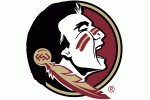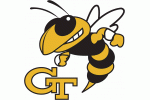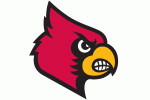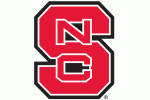- Let me first start by saying that NC State played very well at times last night. Richard Howell worked well when paired with Tracy Smith, and the coaching staff actively tried to utilize that combo. Ryan Harrow played well enough at the point to not feel like a liability at point guard, unlike his counterpart Javier Gonzalez. The team got good looks at the basket and expended great effort around the basket.
- Now the bad, and the major takeaway for me from the game last night: Sidney's STILL coaching this team as if they were the Timberwolves instead of the Wolfpack, i.e. his end of game strategy to get back into the contest more closely resembled that of an NBA coach than a college coach. Take a look at the game flow chart below as I make this point:
Mouse over the chart at the 2:08 point. It shows the score at 87-75, but at that moment in the game Tracy Smith had just been fouled on a made basket. He hit the free throw to cut it to 11. So NC State's down 11 with ~2:00 to go in the game, at home. In that scenario, Sidney elects to press and play defense to either generate a turnover or prevent a score.
Now, I realize that—with the deficit—the chances of a comeback are very slim, but as the chart shows, Duke's lead at that point was just 56% "safe" (read this if you're not familiar with the concept of lead safety). Daunting, but not impossible. So why, in that situation, did coach Lowe not extend the game by fouling?
Time—moreso than the Blue Devils—was State's enemy and with a 35-second shot clock, about the best NC State could hope for with the remaining clock is three possessions. Unless Sidney was counting on getting fouled shooting threes (that also go in), there's no way to cover 11 points in three possessions. This also assumes Duke goes scoreless during that same timespan.
"Well, but what if NC State had generated a turnover and gotten a quick score?"
Ask yourself this: When was the last time NC State created a turnover out of their press? NC State is not a pressing team and never has been under Sidney Lowe. Were we all Maryland fans and rooting for the Terrapins who are a great pressing team, I would be much more open to using that strategy, but knowing what we know about Lowe's teams, deciding to press and play defense is essentially conceeding 35 seconds every time Duke regains the ball.
"Yeah, but Duke is a great free throw shooting team. You're just going to be trading points."
There's some validity to that point, but the Blue Devils finished the game with a 77% clip from the line. Pretty damn good. But let's say, by virtue of fouling, you increase the number of possessions at the end from three to eight. 16 FTAs x .77 = 12.32. We'll round up, assuming the folks fouled will be Duke's better free-throw shooters. That's 13 points in eight possessions. State, if it hits threes over those eight possessions, scores 24 and the game is tied.
"There's no way NC State hits eight threes in a row."
Is hitting eight threes in a row virtually impossible? Yes. But it's more probable than scoring 11 points in three possessions.
Consider what can happen over those eight possessions if you're fouling and begin chipping into the lead: NC State's at home, in front of a hostile crowd. With each point erased from the deficit, the Blue Devils' free throw shooters become tighter and tighter at the line, and one miss might begat another, and another, and another. Now you're not talking about needing to hit eight threes to get back into it. Maybe you only need to hit six, or even five. Is five-of-eight impossible?
Here's another aspect of proper fouling strategy that benefits NC State: rest. NC State's players, particularly Tracy Smith and Ryan Harrow, were completely gassed at the end of the game, due in large part to pressing and chasing Duke's players for 35 seconds at a time. Fouling stops the clock repeatedly, giving the NC State players 30 seconds or so each possession to catch their breath. Fresher legs at the end might make the difference between a made or missed three when you need it most.
I debated this point at great length with a friend of mine last night. I'm not upset over the end-of-game strategy because I felt like the game was easily within reach or that NC State should've won the game. It's because it's yet again an example of poor college coaching, plain and simple. In the pros, where talent level is such that pressing to generate turnovers is more effective, fouling to extend the game makes less sense. But this ain't the pros, and for too long now Sidney has tried to make his pro coaching style fit into the college game, and it just doesn't.
Some of the things NC State does offensively that Lowe brings to the team based on pro concepts works, but damn, you can't play defense like they do in the pros and give up 92 points, and you can't assume that your players are athletically gifted enough to do something—press and create turnovers—they've never been competent at doing to get back in the game. If you're Sidney Lowe, you have to use a technique that YOUR MENTOR, JIMMY V, made fashionable in the miracle run to the 1983 national title that you were the point guard for!
That's the tought that keeps echoing around in my head. How can the point guard on the team that pulled out improbable wins against Pepperdine (down six with only 24 seconds left in regulation) and beat UNLV 71-70 en route to the title not possibly see the value of fouling to extend the game to at least give your team a chance?
There are other reasons I've checked out on the Lowe era, but watching this team "give up"—if not in terms of effort, but strategy—just leads me to believe it's all over but the shouting.
















